Integral membrane proteins Brr6 and Apq12 link assembly of the nuclear pore complex to lipid homeostasis in the endoplasmic reticulum
- PMID: 20016074
- PMCID: PMC2794714
- DOI: 10.1242/jcs.055046
Integral membrane proteins Brr6 and Apq12 link assembly of the nuclear pore complex to lipid homeostasis in the endoplasmic reticulum
Abstract
Cells of Saccharomyces cerevisiae lacking Apq12, a nuclear envelope (NE)-endoplasmic reticulum (ER) integral membrane protein, are defective in assembly of nuclear pore complexes (NPCs), possibly because of defects in regulating membrane fluidity. We identified BRR6, which encodes an essential integral membrane protein of the NE-ER, as a dosage suppressor of apq12 Delta. Cells carrying the temperature-sensitive brr6-1 allele have been shown to have defects in nucleoporin localization, mRNA metabolism and nuclear transport. Electron microscopy revealed that brr6-1 cells have gross NE abnormalities and proliferation of the ER. brr6-1 cells were hypersensitive to compounds that affect membrane biophysical properties and to inhibitors of lipid biosynthetic pathways, and displayed strong genetic interactions with genes encoding non-essential lipid biosynthetic enzymes. Strikingly, brr6-1 cells accumulated, in or near the NE, elevated levels of the two classes of neutral lipids, steryl esters and triacylglycerols, and over-accumulated sterols when they were provided exogenously. Although neutral lipid synthesis is dispensable in wild-type cells, viability of brr6-1 cells was fully dependent on neutral lipid production. These data indicate that Brr6 has an essential function in regulating lipid homeostasis in the NE-ER, thereby impacting NPC formation and nucleocytoplasmic transport.
Figures
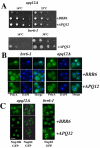


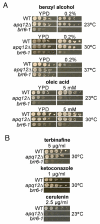
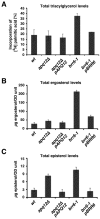
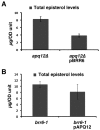

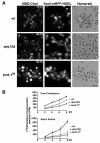

Similar articles
-
Yeast Integral Membrane Proteins Apq12, Brl1, and Brr6 Form a Complex Important for Regulation of Membrane Homeostasis and Nuclear Pore Complex Biogenesis.Eukaryot Cell. 2015 Dec;14(12):1217-27. doi: 10.1128/EC.00101-15. Epub 2015 Oct 2. Eukaryot Cell. 2015. PMID: 26432634 Free PMC article.
-
Integrating complex functions: coordination of nuclear pore complex assembly and membrane expansion of the nuclear envelope requires a family of integral membrane proteins.Nucleus. 2010 Sep-Oct;1(5):387-92. doi: 10.4161/nucl.1.5.12333. Nucleus. 2010. PMID: 21326820 Free PMC article.
-
A short perinuclear amphipathic α-helix in Apq12 promotes nuclear pore complex biogenesis.Open Biol. 2021 Nov;11(11):210250. doi: 10.1098/rsob.210250. Epub 2021 Nov 24. Open Biol. 2021. PMID: 34814743 Free PMC article.
-
Nuclear envelope insertion of spindle pole bodies and nuclear pore complexes.Nucleus. 2012 May-Jun;3(3):226-36. doi: 10.4161/nucl.20148. Epub 2012 May 1. Nucleus. 2012. PMID: 22572959 Free PMC article. Review.
-
Sculpting nuclear envelope identity from the endoplasmic reticulum during the cell cycle.Nucleus. 2024 Dec;15(1):2299632. doi: 10.1080/19491034.2023.2299632. Epub 2024 Jan 18. Nucleus. 2024. PMID: 38238284 Free PMC article. Review.
Cited by
-
Lipid Droplets Are a Physiological Nucleoporin Reservoir.Cells. 2021 Feb 22;10(2):472. doi: 10.3390/cells10020472. Cells. 2021. PMID: 33671805 Free PMC article.
-
Cytoplasmic nucleoporin assemblage: the cellular artwork in physiology and disease.Nucleus. 2024 Dec;15(1):2387534. doi: 10.1080/19491034.2024.2387534. Epub 2024 Aug 12. Nucleus. 2024. PMID: 39135336 Free PMC article. Review.
-
Comparative genomics of nuclear envelope proteins.BMC Genomics. 2018 Nov 16;19(1):823. doi: 10.1186/s12864-018-5218-4. BMC Genomics. 2018. PMID: 30445911 Free PMC article.
-
Brr6 plays a role in gene recruitment and transcriptional regulation at the nuclear envelope.Mol Biol Cell. 2018 Oct 15;29(21):2578-2590. doi: 10.1091/mbc.E18-04-0258. Epub 2018 Aug 22. Mol Biol Cell. 2018. PMID: 30133335 Free PMC article.
-
Pom33, a novel transmembrane nucleoporin required for proper nuclear pore complex distribution.J Cell Biol. 2010 May 31;189(5):795-811. doi: 10.1083/jcb.200910043. Epub 2010 May 24. J Cell Biol. 2010. PMID: 20498018 Free PMC article.
References
-
- Aebi, M., Clark, M. W., Vijayraghavan, U. and Abelson, J. (1990). A yeast mutant, PRP20, altered in mRNA metabolism and maintenance of the nuclear structure, is defective in a gene homologous to the human gene RCC1 which is involved in the control of chromosome condensation. Mol. Gen. Genet. 224, 72-80. - PubMed
-
- Antonin, W., Ellenberg, J. and Dultz, E. (2008). Nuclear pore complex assembly through the cell cycle: regulation and membrane organization. FEBS Lett. 582, 2004-2016. - PubMed
-
- Cole, C. N., Heath, C. V., Hodge, C. A., Hammell, C. M. and Amberg, D. C. (2002). Analysis of RNA export. Methods Enzymol. 351, 568-587. - PubMed
-
- Conti, E., Muller, C. W. and Stewart, M. (2006). Karyopherin flexibility in nucleocytoplasmic transport. Curr. Opin. Struct. Biol. 16, 237-244. - PubMed
Publication types
MeSH terms
Substances
Grants and funding
LinkOut - more resources
Full Text Sources
Molecular Biology Databases

